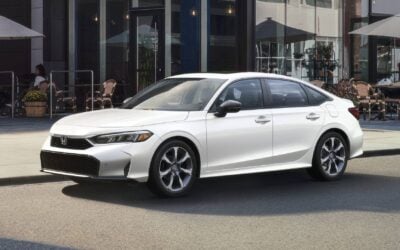As summer 2024 approaches, more drivers are wondering if now is a good time to buy a used car. When it comes to the used car market, the details matter. With the average listing price hovering around $25,540, nearly unchanged from the start of the year, it might seem tough to get a deal. But the price is only half the battle, as you’re about to see.
Let’s dive into the details.
Three Crucial Considerations for Used Car Buyers: Credit Score, Budget, and Timeline
1. The Importance of Credit Scores in 2024
Does Credit Score Matter in 2024? YES. Knowing your current credit score will help you plan for the cost of financing. Planning to pay cash? GREAT! But if not, lenders will use your credit score and debt-to-income ratio to determine if you qualify for a car loan.
In fact, your credit score can help you determine if now is a god tiod time to buy a used car, or possibly even the worst time. Used car loan rates now average north of 13% APR. But that’s just the average. Shoppers with lower credit scores (under 650) will only qualify for higher rates, perhaps approaching 20% APR for the lowest scores, if you can get qualified at all.
Check out the 2023 data from Experian via MarketWatch to see the average auto loan rates by credit score. This is very similar to what shoppers should expect today, as rates have remained high over the past year.

How much does interest rate matter with a used car loan? Let’s look at a realistic example. With a $30,000 car loan over 72 months, the difference in interest paid between a loan at 5% APR and one at 15% APR is substantial. It’s always best to opt for a shorter loan term, but we’ll use this example since more drivers are stretching out their payments as prices rise.
What’s the difference in interest paid? With a 5% APR, you would pay approximately $4,776 in interest over the 72 months of the loan. However, at a 15% APR, the interest spikes to $13,632, resulting in an additional $8,856 in interest costs. This highlights the significant financial impact that APR can have on the total cost of a loan.
No matter when you get serious about buying, DO NOT overlook the power of having a good credit score. It’s the difference between paying a little interest, and eye-gouging amounts owed month after month.
👉 Finance Your Car Like a Pro With This Cheat Sheet (100% FREE)
For more about what credit score car dealers and banks use, check this out.
2. Know Your Budget
The reality of 2024 is stark: cars are more expensive, and finding a reliable, low-mileage vehicle under $10,000 is virtually impossible. According to research from iSeeCars, while 49.3% of all used cars were priced under $20,000 in 2019, today that number stands at just 12.4%.
Before you fall in love with a make or model, use tools like CarEdge’s Car Search to set realistic expectations and shop within your means.
👉 Bookmark This FREE Out-the-Door Price Calculator
3. Consider Your Timeline
If you’re not in urgent need of transportation, waiting might be wise. We anticipate used car prices could drop an additional 2-5% later in the summer and potentially even more towards the end of the year. Delaying your purchase could save you thousands, especially if interest rates begin to decrease as predicted. Although with inflation staying stubbornly high, the general consensus is that interest rates will remain at current levels for at least a few more months, if not longer.
Considering New Cars Too? See This Month’s BEST Deals.
So Is Now a Good Time to Buy a Car? CarEdge’s Advice for 2024

Deciding whether to buy a used car now or later in 2024 boils down to your personal circumstances—your budget, your credit score, and how urgently you need a vehicle. If your situation allows, waiting a few months could be financially beneficial, both in terms of lower prices and potentially reduced interest rates. This is especially true if you could use more time to improve your credit score. Qualifying for the best rate possible will save you thousands in interest payments with most used car loans today.
However, if you need a car soon, finding a well-priced deal now is possible IF you’re prepared to negotiate. Check out the free tools below! And remember to use CarEdge Pro to equip yourself with local car market data. You’ll negotiate like a pro in no time!
So overall, is now a good time to buy a used car? The answer is that it’s an okay time, and better times are ahead once prices drop further, and these insanely high interest rates come down. But the future is notoriously hard to predict. If you need a ride quickly, you CAN score a deal with negotiation know-how.
Free Car Buying Help Is Here

Navigating the used car market can be complex, but with CarEdge, you’re never alone. Ready to outsmart the dealerships? Download your 100% free car buying cheat sheets today. From negotiating a deal to leasing a car the smart way, it’s all available for instant download. Get your cheat sheets today!
Stay tuned to CarEdge for more insights and tips on car buying in 2024!













0 Comments